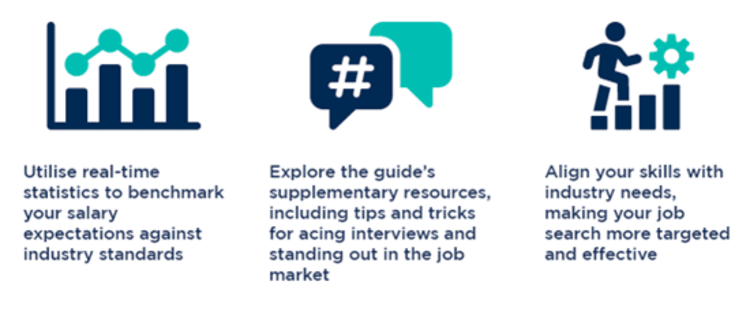In the complex world of business, staying informed about key economic indicators is crucial for both job seekers and businesses.
Whether you’re searching for a job or managing a company, understanding these indicators can guide your decisions and strategies effectively.
Below, we will simplify these economic signals to help you understand their impact on job markets and industries. Plus, we’ll provide practical tips on how to use this information to your advantage:
Unemployment Rate
As of early 2024, the unemployment rate has declined to 4.7% – suggesting a tightening job market with increased competition for available positions (Bureau of Labor Statistics, 2024). This is a critical indicator for the overall job market.
Actionable Advice
A low unemployment rate doesn’t guarantee instant success in finding a job, but it does indicate a favourable environment. Use this time to refine your skills, network actively and pursue opportunities that align with your career goals. For businesses, a low unemployment rate can signal a competitive hiring landscape. To attract top talent, focus on offering attractive compensation packages, fostering a positive company culture and investing in employee development programs.
GDP Growth
The Gross Domestic Product (GDP) measures the economic activity within a country, reflecting the condition of the economy. The GDP growth rate recently reported a robust increase of 3.2% for the fiscal year 2024, indicating a vibrant economy (World Bank, 2024).
Actionable Advice
Job Seekers should pay attention to GDP growth trends to identify industries and regions experiencing an economic boost. Consider targeting your job search in sectors that are expected for growth and investment.
Businesses should use GDP growth data to plan strategic decisions about expansion, hiring and investment. A robust GDP growth rate may present opportunities to scale your business and capitalise on emerging markets.
Wage Growth
Wage growth indicates the increase in average wages of labour and its demand. Recent trends show a 5.3% increase in average wages across sectors in 2024, suggesting tightening labour conditions and a competitive job market (Bureau of Labor Statistics, 2024).
Actionable Advice
Job Seekers can focus on negotiating for competitive salaries based on market trends. Invest in skills development to enhance your value in the job market. Consider industries or roles experiencing higher wage growth for better earning potential.
Businesses must stay competitive by offering competitive wages and benefits packages to attract and retain top talent. Monitoring wage growth trends to anticipate changes in labour market dynamics can help in adjusting recruitment and retention strategies accordingly. Invest in employee training and development to ensure workforce productivity and satisfaction, contributing to long-term growth and success.
Conclusion
Navigating the economic indicators is important for informed decision-making in your career or business. By understanding and interpreting these signals, you can strategically position yourself to take advantage of the dynamic job market and economic conditions.
Remember, in the vast expanse of economic seas, knowledge is your compass, and foresight your guiding star. Arm yourself with insights, adapt to changing tides and chart a course towards success in the world of work and commerce.
Sources: Bureau of Labor Statistics, Federal Reserve Economic Data, World Bank
